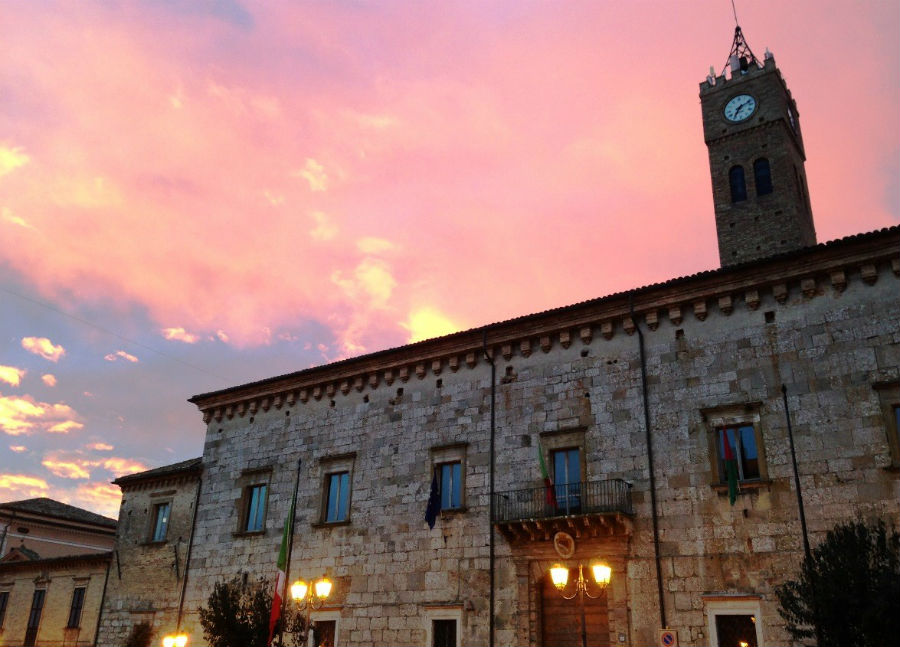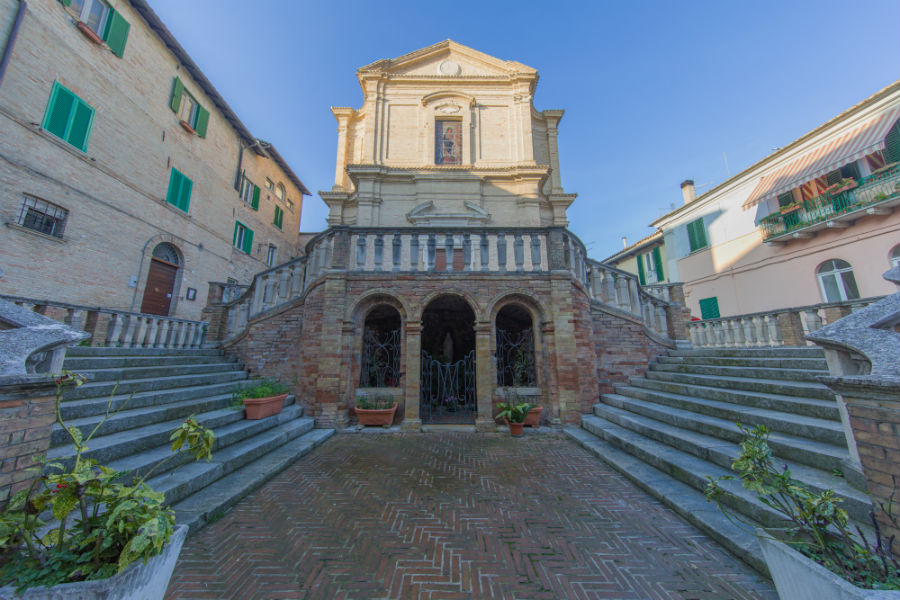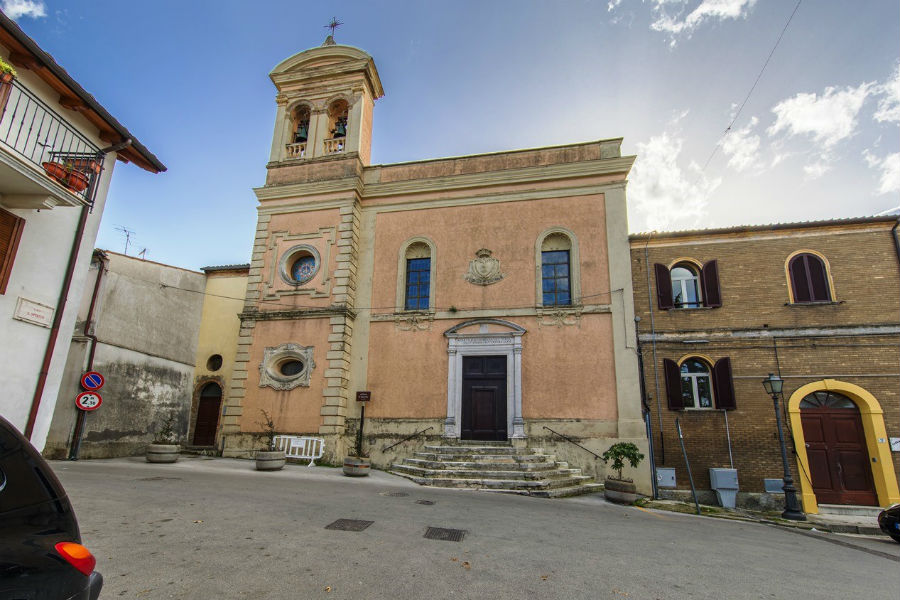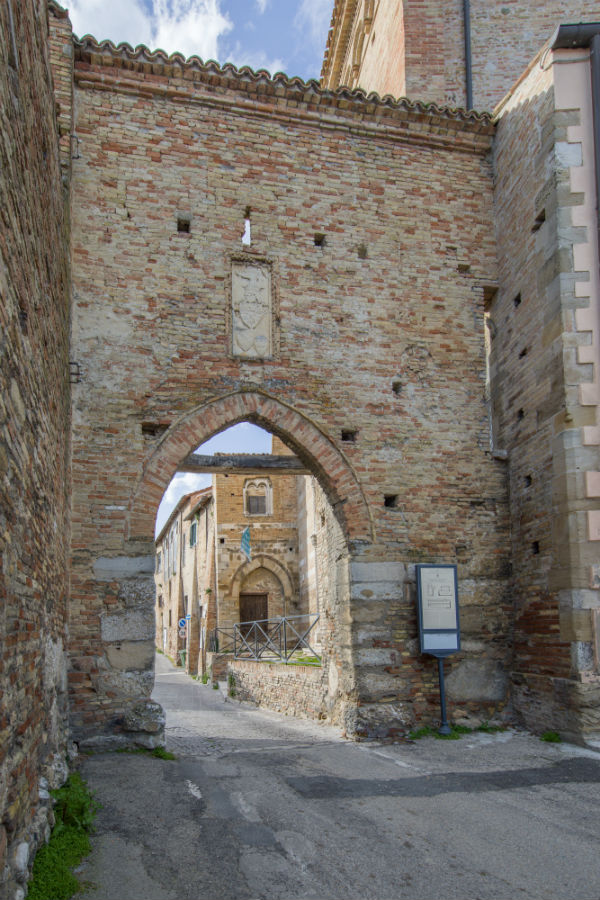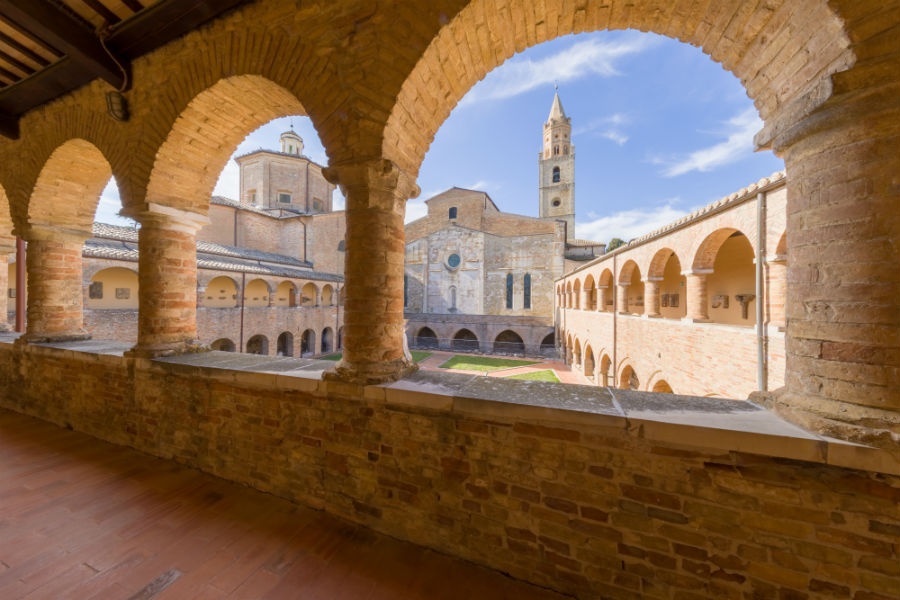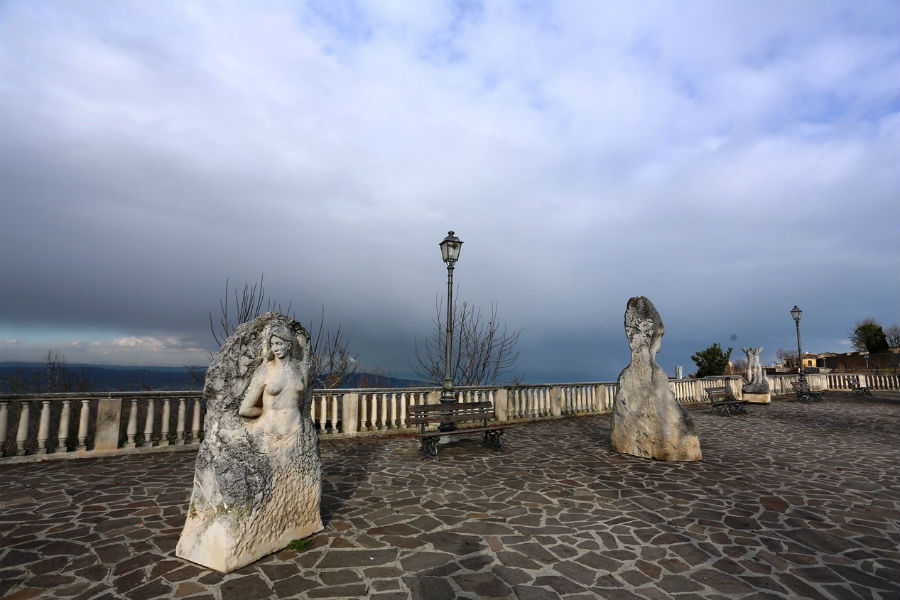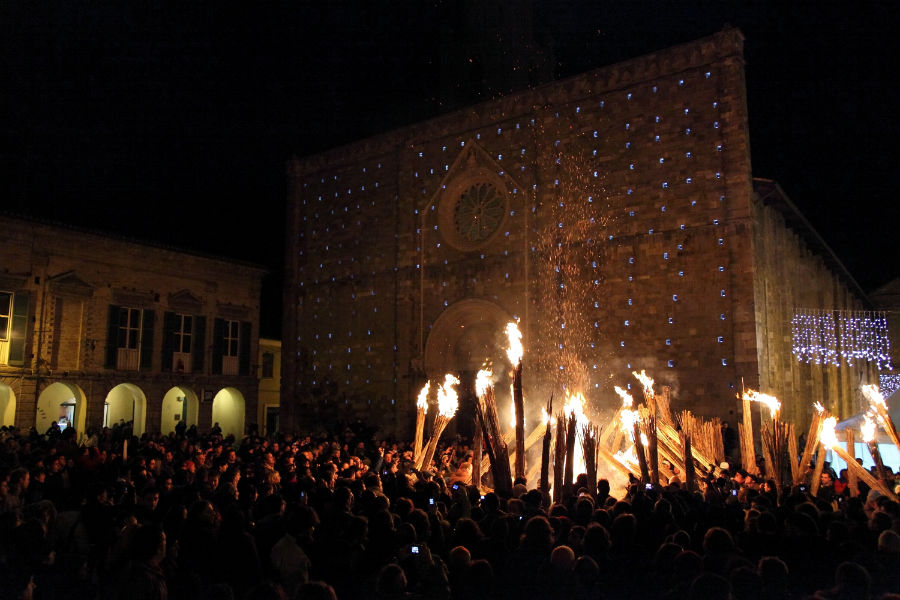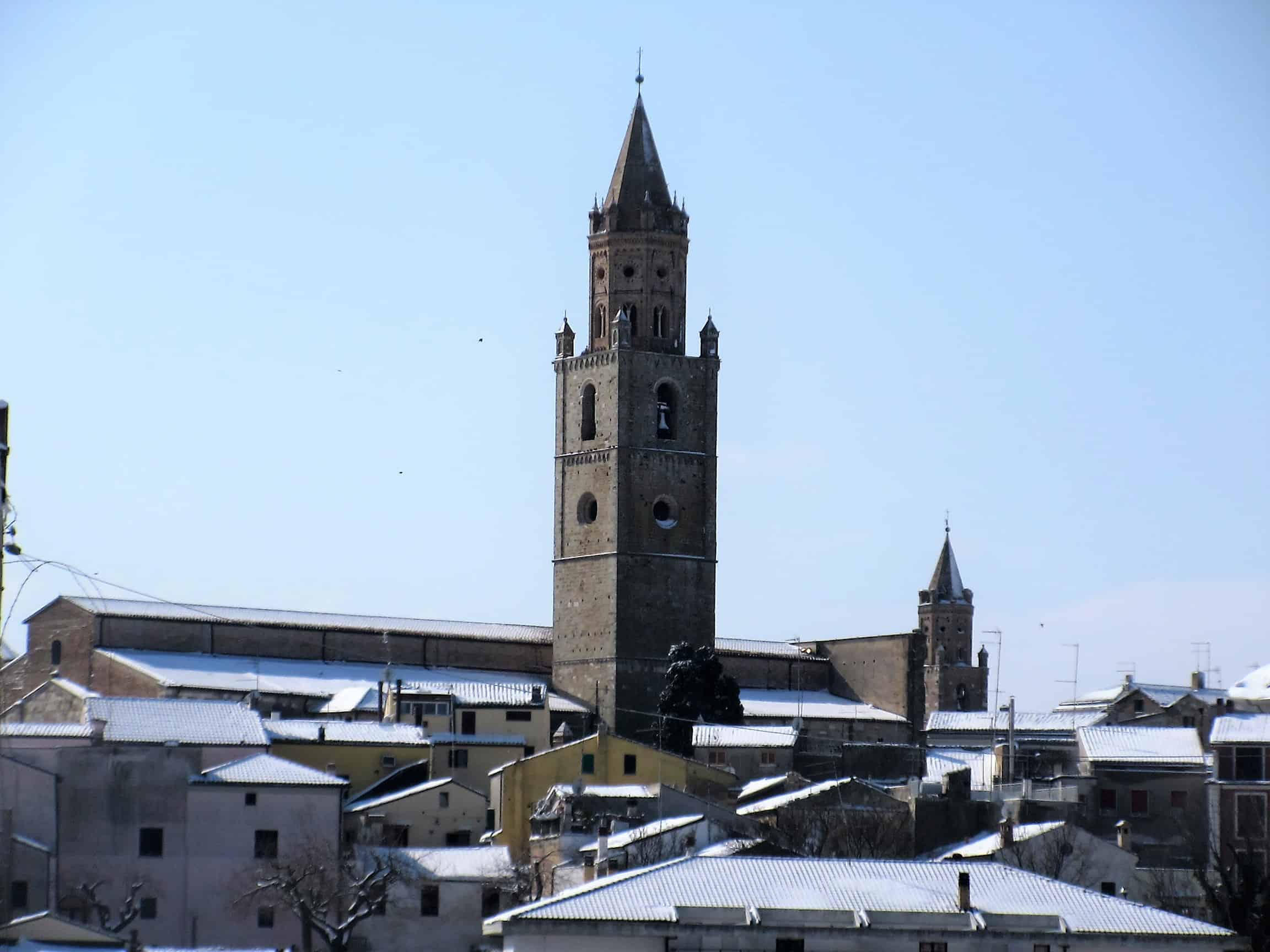Atri
- Suitable for disabled people
- Camper parking area
- Oil city
About the village
Between fertile hills wetted by the breeze of the sea and brulli gullies, rises the charming and towering borgo di Atri. Known to the Greek and latin authors as the strong and stalwart Hatria Picena, its origins date back to the Iron Age (X-XI century a.c.), as demonstrated by the numerous archaeological finds. Hatria was a powerful city forming part of V Regio of territory Piceno, among the first to issue an own currency cast in bronze signed HAT since the Roman era (IV-III a.c.), preserved today at the most important museums of the world.
By virtue of his outstanding social status and commercial matters was one of the first cities to ally themselves with the Romans already in 289 a.c., playing a dominant role in the expansion of what would have been the future empire. Through the formula togatorum, Atri helped Rome in the most delicate moment of his statement providing several militi, among which was distinguished Salvieno Publius, the family of the Publii, the same of the Emperor Publio Helium Adriano.
Because of its strategic importance and commercial, it is believed that the city has given its name to the Adriatic Sea (Hadria, Hadriaticum). The Greek geographer Strabo recalls the presence of a maritime harbor on the coast at the service of the city behind, whose flourishing trade allowed from the very beginning an opening extensively on the whole culture of the Mediterranean. Through the so called hadrianai amphorae, which Pliny describes how tenuitas and firmitas, you commerciava oil and in particular wine, much appreciated by the Greek medical purpose medicament, good for the digestive system and demanded from Egypt as show the papyri found. Polybio narrates that Hannibal healed their horses and his army, suffering from scabies, with the old wine piceno, crossing the territory Pretuziano and Adriano. Also the ancient coins bear an iconographic repertory linked to the sea, dolphins, rays, wine amphorae, all the elements that characterize the city since the IV century B.C.
In the VI century B.C. Atria is allied to the confederation picena terminating in Ascoli Piceno, as evidenced by the fascinating burials found in locality Colle della justice and Pretara. This is true and own necropolis, thirty-five burials of men, women and children, with their outfit. In this period Hatria was one of four sea emporium present on the Adriatic together with Plug, Numana and Porto Trebbia, open to the entire culture of the Mediterranean from the very beginning. The period preromano preserves important monumental and tanks of the republican era (IV century B.C.) in the dungeons of the Cathedral of Santa Maria Assunta and other aquatic systems still efficient and functioning as the famous archaeological fountains.
During the imperial age, when he ascended to the torno Adriano, Atri lived its period of maximum splendour. The emperor took particular care of his own country of origin. Even today the main street of the town is named after him. Here lived the gens Aelia, from which the name of the Emperor Aelio Hadrianus, in a portion of territory identified as Ager Hatrianus that a time is extended to the north up to the river Vomano, South up to the river Saline, between the Adriatic Sea and the slopes of the Gran Sasso d'Italia and that today partly follows the so-called Terre del Cerrano.
In the medieval era, Atri became one of the centers historically and culturally more important in central-southern Italy, thanks to the duchy of Acquaviva. On the occasion of the struggles between the Swabians and the Papacy Atria, first among the cities of the Kingdom, lined by the Guelph party. For the fidelity and the availability of the city at the service of the Church, in 1251 Pope Innocent IV conferred in Atri the diploma of the institution of the Diocese and of communal autonomy with the territory corresponding to that of the old colonial agro romano. It was in this period that the ancient Ecclesia of Sancta Maria de Hatria was elevated to the title of the Cathedral, with a long season of restorations and artistic works of high quality that concluded with the splendid portals of the '300 by Raimondo del Poggio and Rainaldo d'Atri, of so-called Atriana School, a note bottega of ancient origin of which traces are found architectural and sculptural works throughout the Abruzzi.
In the quarrel of the territory between the Papacy and the Royal property, Atria from 1393 became the seat of the duchy of Acquaviva, one of the seven families the most important of the Kingdom Naples, that here first set up its headquarters in control of a very large territory, secured on the coast from the famous Torre del Cerrano.
The historic center of the atria is dotted with monuments, palaces, museums, characteristic alleys and squares that revolve around the main course Course Helium Adriano, entitled to the homonymous emperor, under which still lie the ancient streets in paving romano and precious mosaics belonging to the rich domus, partly recovered. Here Overlook beautiful religious buildings and imposing palaces that go from the period of the Renaissance, Baroque, neoclassical until the Liberty style of which there are few examples in Italy. Surrounded by mighty walls that recall barbarity and bloody piraterie, in the northern part of the city extends to that today it is a very pleasant path belvedere that sweeps simultaneously from the sea to the mountains, 442 meters s.l.m., which takes us up to the only surviving gate of the city: Porta San Domenico bearing the coat of arms of the lineage Acquaviva d'Aragona with a rampant lion crowned, recalling tacitly all the elegance and the beauty of the time.
Many traditional events in the course of the year and the typical products that can be tasted in the territory and in the village. Among the most famous pecorino cheese d'Atri, the arrosticini, honey, licorice, maccheroni with the crumb, oil and sweet Pan Ducale. Among the wines we remember the Montepulciano d'Abruzzo, the Trebbiano and Chardonnay.
Village of Atri
Municipality of Atri
Province of Teramo
Abruzzo Region
Population: 7.332 Atriani
Altitude centre: 444 m s.l.m.
Protected Natural Areas:
Gullies of Atri Natural Reserve
Municipality
Piazza Duchi d'Acquaviva - Tel. +39 085 8791220
9.59 Kilometers from Atri
9.59 Kilometers from Atri
9.63 Kilometers from Atri
9.63 Kilometers from Atri
9.69 Kilometers from Atri
9.69 Kilometers from Atri
23.86 Kilometers from Atri
23.88 Kilometers from Atri
BY CAR
- From the north and south, take the A14 (from the north: direction Ancona; from the south: direction Pescara), exit at Atri / Pineto, follow the direction of Atri taking the SP 28.
- From Pescara, take the SS 16 towards Chieti, continue towards the A14, exit at Atri / Pineto, follow the direction of Atri taking the SP 28.
- From Chieti, take the SS 81, take the A14, exit at Atri / Pineto and follow the road towards Atri, taking the SP 28.
ON THE TRAIN
- Pineto-Atri railway station.
BY BUS
- Autolinee Arpa (Abruzzese Regional Public Buses):
BY PLANE
- Pescara airport
- Ancona airport
- Rome Ciampino Airport
- Rome Fiumicino Airport
BY SEA
- Tourist port of Pescara
- Maritime station of Giulianova
- Port of Vasto
In the village of Atri the Table is a true and proper art. An iisland of gastronomic civilization, where still today in most homes reigns the “earth”, kneaded by skillful hands and where almost everything is cooked with olive oil.
Typical Dishes. All is genuine, fruit of the earth and its traditions. During all the celebrations on the tables there are Scrippelle ‘mbusse (salty crepes wrapped with parmesan and immersed in chicken broth), the Timbale (composed of several layers of pasta and stuffed with ragù meat, mozzarella, mushrooms and vegetables), the Guitar macaroni pasta with the Pallottine (The maccheroni are stretched on a tool named typical guitar and served with Pallottine meat.
The Virtù, are the flat symbol of Teramo Gastronomy and the atria. The first of May it celebrates the rite of preparation that consists in eating all the leftovers of winter remained in the pantry, mixed with the firstfruits spring. The preparation of the dish lasts two days and is mostly composed of vegetables, legumes and pasta, cooked before separately and then together. To this base is then added pieces of ham and the rind of the pig.
The ciffi and ciaffe of veal, chicken and lamb and pork cooked in the pan with wine, garlic, pepper and natural odours. Li surgitti,instead, are gnocchi at the Atri Style. The taccunilli, fettuccine Campagnola. The arrosticini, cubes of sheep meat, weighing approximately 20 gr. inserted into long sticks and facts cook grilled. Meats and Cheeses are a specialty, in particular the atriano Pecorino cheese, less hard of Sardinian cousin, made using untreated whole milk. The paste, half cooked, is compacted with slight eyeing. The seasoning lasts about 4 – 6 months in this period the surface of the cheese is partially greased by hand with a mixture of oil and vinegar.
Beer of Atri. Are numerous documents and testimonies that allow us to locate in Atri, as one of the earliest centers in Italy for the production of beer. In fact, around the VIII century settled in Atri the abbots of Farfa, at the Benedictine Monastery of S. John at Cascianello, on a hill to the north of the village. The abbots, in some documents of the 1181, narrate the production of wheat and barley used to realize a beverage, completed with rosemary or laurel (gruit or gruyt). In the documents that narrate the celebrations of 1223 for the reconstruction of the church of Santa Maria, destroyed by the Norman raids, we read again the drink at the basis of barley. Unlike previous, this document is indicated the introduction of a new plant brought in Atri by the Normans, perhaps the hop, replaced with other herbs, which ensured a greater conservation of the product. A tradition that continued even under the dominion of the Dukes Acquaviva, long almost 1000 years.
Sweets and Pan Ducale. The Christmas period is characterized by the numerous desserts that abound on the tables: caggiunìtti (fried dough stuffed with chestnuts or jam); The scilateddi (circular biscuits covered with jam); li pepatile (biscuits of black oaks with almonds and peep). Li recesses de Sand’Antonio are the typical dish of 17 January (biscuits in the shape of a bird, filled with grape jam). The Pan Ducale instead is a typical sweet from 1300, made with almonds and enriched with chocolate, everything thoroughly prepared with fresh raw material.
Wines
- Montepulciano. Of ruby-red color, rich in body and structure, with hints of vanilla, licorice, tobacco. It is a wine suited to accompany first courses with meat, red meats, lamb in the oven, game, salami and cheeses.
- Trebbiano. White wine with a straw yellow color, a pleasing aroma and delicately perfumed aroma, the flavor is dry, velvety and aromatic. Recognizable are the scents of apple and peach.
- Cerasuolo. Product always from Montepulciano, but with different vinification technique, which provides for a shorter time in fermentation. It has a characteristic cherry red, the flavor is dry, soft and aromatic, with a delicate almond aftertaste.
Licorice. The plan of the licorice, whose name means “sweet root”, is a rustic perennial herb, frost resistant, which can exceed one meter height. In the kitchen is used in the preparation of desserts, and is excellent to sweeten the herbal teas. The liquorice roots, placed in infusion, constitute a good remedy for the cough, because they have emollient properties. Also the sore throat can be fought by chewing a piece of root. Who has low blood pressure can take advantage from the consumption of licorice that tends to raise the pressure. The Licorice exerts finally a mild laxative action. Finally it is also used as flavoring agent in the preparation of some types of beer and tobacco. In Atri Dominican Friars mined the juice of liquorice since the middle ages thanks to the excellent quality of the roots, who gathered in the surrounding area.
Pecorino of Atri. pecorino cheese traditional, whose production is now almost exclusively housemade. Is obtained from whole raw sheep milk with rennet lamb or pork and it's a cheese with semi-hard, semicruda, with the punching is small and not very widespread. The color varies depending on the seasoning. Its characteristics are dictated by the particular cooking and from’power of sheep, constituted by particular local vegetation and climate.
It's usually stored under local extravirgin olive oil after aged 40-60 days in bran or, more rarely, in the ash. Pecorino of Atri softens with the oil, acquiring a particular fragrance that makes it unique. Pink shades are becoming more and more present close to the outer area.
Now much rare is the "Marcetto" version, which would be absolutely prohibited by current laws of health. The obtained leaving attach forms of Pecorino di Atri medium-high maturing by the larvae of insects that you harbor and the rots away. A product is obtained from the intense flavor and delicate, very soft. Many remember the elderly chase with the fork the tasty larvae.
The city of Atri in 1395, was sold for 35,000 ducats to the Count of S. Flavian Antonio Acquaviva, with which began the duchy of this family which distinguished itself in Italy in the Renaissance period and which will last until 1757, the year in which the town came under the direct dominion of the Kingdom of Naples until the Unity of Italy. The family Acquaviva, allied with the Aragonese, had nineteen dukes among which Andrea Matteo Acquaviva, good humanist and rich mecenate which is surrounded by artists and writers such as Pontano and the Sannazzaro, giving new impulse to the artistic and cultural life of the city, commissioning the prestigious cycle of frescoes in the Cathedral also known as the Sistine Chapel of Abruzzo. Founded at the time, a private typography the beginnings of the art of printing. In that period he translated the moral formation of Plutarch; the Cantalicio decantò its rich Library whose beautiful illuminated manuscripts dedicated to him are preserved today in the Hofbibliothek of Vienna. Another famous character was Claudio Acquaviva, he was responsible for the drafting of the Ratio Studiorum from latin study plan, bringing to fulfilment all the Didactic Rules and pedagogical for the Jesuit colleges, i.e. the document that formally established rules regarding the formation of the Jesuits in 1599.
The Company of Jesus had a revival worldwide thanks to its work which he overlaid the charge of general of the Jesuits for thirty-five years from 1576 to his death. His nephew Blessed Rodolfo, Jesuit was a very important missionary. His story is still remembered by a fresco from the 1800's that probably dominates the antecedent, located in time of a room of the noble floor of the Palazzo Ducale. Worthy of mention is also Cardinal Giulio Acquaviva which had as camarero Michele Cervantes, the author of the famous novel Don Quixote. Many characters of the important lineage distinguished themselves for the battles against the incessant Saracen invasions, note as the Battle of Lepanto, and in particular that of Otranto, where he distinguished himself and lost his life Giulio Antonio Acquaviva, that thanks to this heroic act was awarded with the distinguished of real lineage. The family Acquaviva from the end of the XV century added to your surname the appellative of Aragon with diploma regio, and authorized to boast of heraldic emblems of Aragon which everlasting sign of recognition by the king of Naples Ferdinando I, for the courage shown against the Turks who had besieged Otranto and destroyed his people in the name of the Muslim faith.
- August - Arrosticini and Pecorino Cheese Festival. In Via Santa Margherita, this festival is particularly tied to two products symbol of the Abruzzese cuisine: Atri pecorino chesse and the arrosticini. The region Abruzzo in two dishes really loved by everyone, to taste in this small village with a beautiful background music.
- Weekly Market: Every Monday, Wednesday and Friday, in the center.
- May/June (Sunday after the SS. Trinità) - Corpus Domini. The traditional Infiorata typical of many italian cities villages. Since morning men and women prepare the petals and drawings for the large floral carpet that will be prepared in Piazza Duomo and where the procession will pass.
- Casoli Pint. Since 1996 held in the hamlet of Casoli and foresees the construction of murals on the walls of the houses by painters from all over the world who have covered with works of art and the external walls of the houses, renewing the appearance of Casoli and transforming the small village in an outdoor museum. The artists are hosted by the inhabitants for the whole time of the realization of the works.
- Reportage Atria Festival. A festival dedicated to the photographic reportage. Has a full program of events, exhibitions and meetings that tell individually and together the soul and the meaning of the trade of the reporter. The artistic direction is of Toni Capuozzo (TG5). Attended: Paolo Woods, Marco Anelli, Marco Di Lauro, Paolo Pellegrin.
Sleep, eat, buy...
24.25 Kilometers from Atri
Events
14

